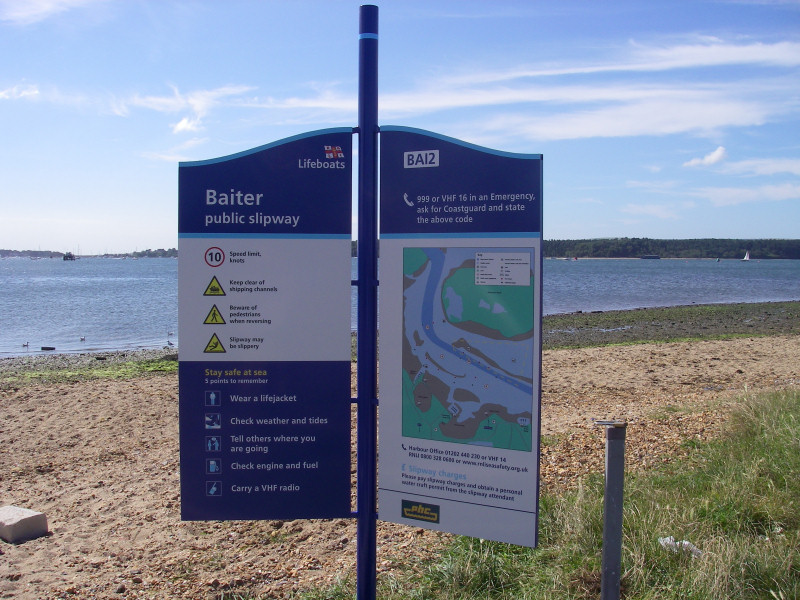
RNLI sets the standard for slipway safety signage
by Katie Wilton, RNLI 17 Oct 2008 08:37 BST

The RNLI sets the standard for slipway safety signage © RNLI
The Royal National Lifeboat Institution (RNLI) has produced a new guide to slipway safety signs and symbols, which aims to set a new national standard for the design and content of slipway signage. The guide, targeted at slipway owners and operators, was formally launched by RNLI Sea Safety Manager, Peter Chennell, at the UK Harbour Masters Association Autumn Seminar held in London this week (15 October 2008), as part of the RNLI's commitment to sea safety education and information.
As small powered craft that launch from slipways accounted for almost one third of RNLI rescues in 2007*, communicating simple safety messages effectively is vital. The RNLI hopes that a standardisation in signage around the coast of the UK and Ireland will help to reduce the number of accidents and lifeboat launches.
The guide was developed by the RNLI during a two-year research and consultation programme in partnership with the UK Harbour Masters Association, UK Port Authorities and local councils. Research showed that at slipway locations around the coast of the UK and Ireland, users are often bombarded with different types of signs and a variety of information - public, statutory, hazards and safety. The variety of different messages, materials, colours and sizes of signs can lead to public confusion and 'sign blindness.'
To help combat 'sign blindness' the RNLI's consultation culminated in the trial of the newly devised standard for signage in seven locations** across Devon, Dorset, Hampshire and on the River Thames in London in August 2007. The success of the trial helped identify three categories of signs suitable for display on public slipways: access signs, reminder signs and daily conditions signs. It also resulted in the final development of the 'RNLI's Guide to Slipway Safety Signs and Symbols'.
The guide is itself simple and clear to use, designed to help slipway owners and operators decide their signage requirements - which type of sign is needed, how many, where to locate them and, just as importantly the design of the sign. The guide contains templates so that signs can be tailored to each specific slipway location along with information on sign manufacture and the unique slipway location code (USLC). The USLC is a new scheme that gives each sign a unique code that is precise to its location that will help emergency services locate an incident.
Sea Safety Programmes Manager for the RNLI, Tony Wafer says:
'We're delighted that the RNLI's guide to slipway safety signs and symbols is now in print. I'd like to thank the local and harbour authorities who have worked in partnership with us, and I now urge all those responsible for public safety on slipways around the coast of the UK and Ireland to contact the RNLI for a free copy.'
'Ultimately I hope that RNLI slipway safety signs will be adopted nationwide by slipway owners and operators because we want to encourage all slipway users to have a clearer understanding of the local hazards, by-laws, tides and what to do in an emergency to help them stay safe on the water.'
The creation of the RNLI's Slipway Safety Signage Guide follows on from the success of its Beach Safety signage Guide launched in 2005. Now adopted by around a quarter of beaches in the UK it also forms part of a new international beach safety signage system. The goal is for the RNLI's slipway safety signage initiative to receive endorsements from relevant safety and marine organisations to secure wider accreditation and adoption.
More information on the RNLI website.